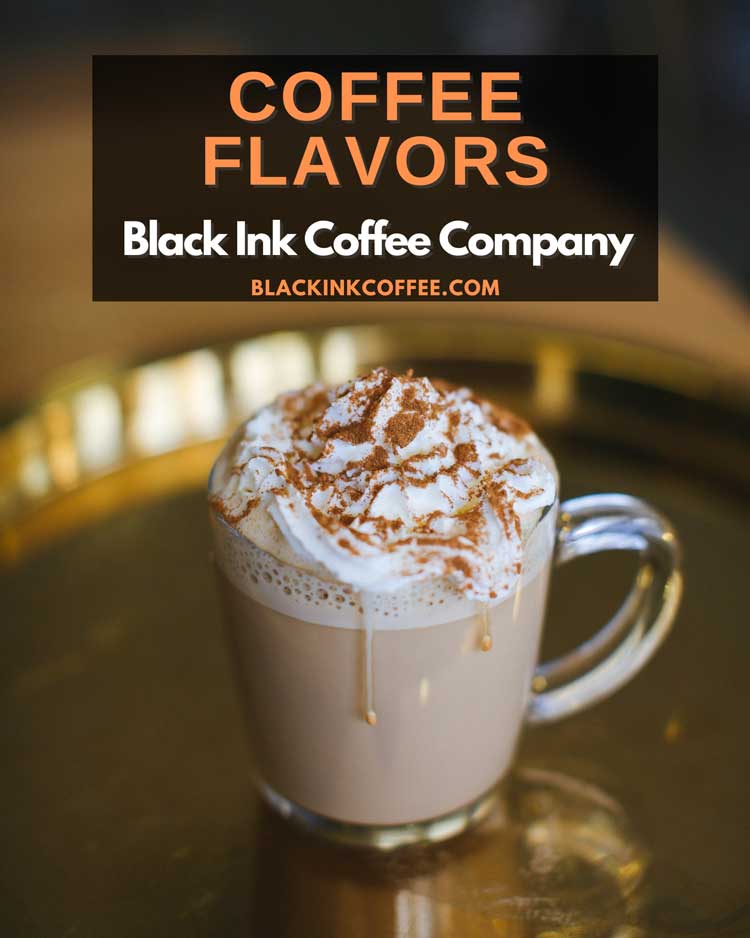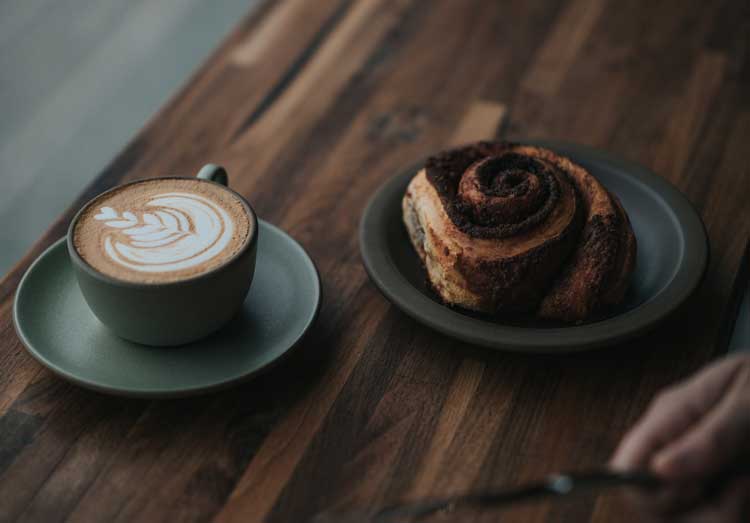
Coffee Flavors: Ultimate Coffee Flavoring Guide and DIY Recipes
Coffee Flavors
Not everyone enjoys black coffee. Some people find it bitter, others think it is just too strong and make the change to flavored coffee beans. The best part about coffee, and taste in general, is that it is all subjective. Although coffee already has subtle flavor nuances, many people find themselves needing a bit more flavor. As a result, new and unique coffee flavors are seen more and more today.
Despite what some people say, there is no right way to drink coffee. Even if you are using the best coffee beans, we like what we like and don't let anyone tell you any different. Adding extra coffee flavors should not be looked down upon, even if you are taking away from the original flavor profile that the famer worked so hard to achieve! Now that we got that coffee stigma out of the way, how do they flavor coffee?
Coffee Flavoring

Flavoring coffee is quite a sticky business to get into, literally, but there really isn't much to it. So how do they flavor coffee? Well, the process of making flavored coffee is as simple as roasting coffee beans and then adding a flavor syrup to the roasted coffee beans.
The most popular flavor syrup that many coffee roasters and cafes use, is Torani. However, there are many different types of flavor syrups. We like Torani because of the endless options they have and because they use limited ingredients.
Flavor Syrups
Flavor Syrups are what coffee businesses like to use to sell flavored coffee beans and flavored ground coffee. Just pour the flavoring into the coffee beans, and let them soak for a few hours or days, shaking or stirring them in between. Adding these flavor syrups is considered post flavoring, simply because we are adding the flavor after the roasting process.
Third Wave Coffee
Some third wave coffee shops or roasters are completely against the idea of adding flavor to coffee simply because it may mask the flavor characteristics that the beans already have. These shops or coffee roasting companies typically source high quality coffee beans that they have tested and specifically chosen for their unique characteristics. For them, adding flavor is seen as ruining the coffee. Some of these coffee places are the ones that advocate for drinking black coffee only and are even against blending coffee beans. I value these places for wanting to focus on the individuality of the bean origin, but there are some balances roast profiles and tastes you just can't get without blending coffee.
Foo Foo Coffee
On the other end of the coffee spectrum, some coffee roaster or coffee shops prefer flavored beans as it gives them a chance to serve a different customer base. Also, adding flavor to a bean can be a great way to give away older, past crop coffee beans without having to sell them at a discount. These businesses are usually the places that do not judge for putting extra cream and sugar in your coffee. Some people refer to these places and types of coffee drinks as foo foo coffee.
Black Ink Coffee
Where does Black Ink stand? Well, in the middle actually. We believe in putting forward the absolute best product that we can, while also giving our customers what they want. Coffee flavor preferences are subjective, so we are against the notion that coffee needs to be served a certain way and plan to cater to everyone's palette and coffee cravings. We plan to use safe natural flavoring in a way that enhances the coffee beans subtle flavor nuances, but will be careful not to mask them.
Aged Coffee Beans

Aging coffee beans is a trendy way to flavor coffee. Despite what many people think, this practice has occurred for many years. In fact, when you think about how long it took boats to cross the oceans back in the day, it makes perfect sense where this practice came from. Although it was unintentional, it was the norm simply due to how coffee was shipped and the logistical nightmare of keeping up with supply and demand without a telephone or internet.
Today, we can ship coffee around the world in a matter of days, but a few hundred years ago it would have taken months or years for coffee to travel across the world. Although marketers and coffee businesses are hyping up "aged coffee", it is important to know where it came from and that it isn't always a good thing.
Old Coffee
Today, the process of aging coffee is not always intentional. With supply and demand always changing, it is quite common for there to be an overabundance of coffee one year which means that it'll typically be left to sit on pallets in warehouses until it is sold. However, some people purposely let the coffee age and they do it in a manner that will give the coffee more taste.
Most coffee businesses buy current crop coffee beans which means that the coffee beans were harvested from the last harvest cycle (usually within the past year). Fresh coffee beans are often sought after, especially by third wave coffee shops, because they are typically brighter and fresh tasting. Adding some fresh crop coffee beans to a blend that is starting to taste dull will instantly give it some character.
Although we typically prefer fresh coffee, older coffee can be just as attractive in that it may posses more depth in flavor and won't have the grassy aftertaste that fresh coffee seems to have. Light roast coffee also has this grassy taste, just an FYI that you aren't crazy if you ever taste grass in your coffee.
Whisky & Bourbon Barrel Aged Coffee
There is a difference between old coffee and coffee that has been aged properly and purposefully. This leads us to the trendy practice of aging coffee in barrels so that they absorb the flavors of the barrels. On a molecular level, there is a whole lot more taking place, but for the simplicity of this article, just know that using whiskey, bourbon, and wine barrels can add a lot of desired characteristics to the beans within. For example, a good bourbon aged coffee will exhibit low acidity while providing a heavy body with tasting notes of wood from the barrel. I recommend giving this one a try if you haven't done so already!
Flavored Coffee

If your goal is to make your average cup of coffee taste unique in a way that you can control, there are many DIY coffee flavors you can add using simple ingredients found in your cabinet. Here are 5 ingredients you can add to your coffee to make it taste better.
Cinnamon
Ever try the cinnamon challenge? If so, you'll know that a spoonful of cinnamon can go a long way. Simply sprinkle some cinnamon on your morning cup of coffee to give it a boost of flavor while also adding antioxidants to your diet. Personally, I like to add cinnamon to my summer cold brew and could drink it all day long.
Cocoa
I highly suggest cocoa as it is a quick fix for those of you craving something that is most likely unhealthy. It is a low calorie solution to your mocha coffee craving and it makes for quite a delicious additive, especially if you add it on top of some milk foam. Did I mention that this is also high in antioxidants?
Maple Syrup or Honey
If you are reading this from Canada, you already know about Maple Syrup, eh? Maple Syrup and honey pack a punch with how sweet they are, so it is better to add a little bit to your coffee at a time. Although these are higher in calories, they are natural sweeteners that will give your coffee a unique flavor. Just ask Buddy the Elf.
Peppermint
You don't need to wait for the holidays for this one, peppermint oil is great all year round and it'll give your daily coffee a wonderful change of taste. Peppermint is also great as it packs many nutrients while also being next to zero calories.
Vanilla Extract
I am sure that many of you have cooked with vanilla extract before, its easy and can really enhance the flavor of most foods and drinks. Be careful with this though, one sneeze and you'll end up with a cup of vanilla with a pinch of coffee.
What Flavor Is Coffee?
Surprisingly, coffee is already flavored. No, not the "coffee" flavor you immediately think of. The coffee cherry that a coffee bean comes from (yes, coffee beans are actually coffee seeds), has it's own unique flavor nuances depending on the region, varietal and type of coffee. These can range from nutty, fruity or even earthy tasting. Depending on how these coffee beans are processed will determine how flavorful they are from the beginning.
Washed Coffee Beans
The majority of coffee is washed, which is the process of depulping the coffee cherry from the coffee beans with water. Most coffee beans that are washed will lose these powerful flavors and will be left with only a small hint of the original coffee cherry flavor notes. Typically, these are the types of coffee beans used for flavoring as they have less inherent flavor notes.
Honey Processed and Pulp Natural
The other popular process of drying the coffee cherry is what is known as pulped natural or honey processed. It involves leaving the coffee bean inside of the coffee cherry and letting it dry, naturally, before removing the cherry. When this happens, the bean soaks up a lot of the juices and sugars, making it much more flavorful. If you try our Brazilian, you can literally taste the peanut butter nutty flavor notes because it is naturally processed.
